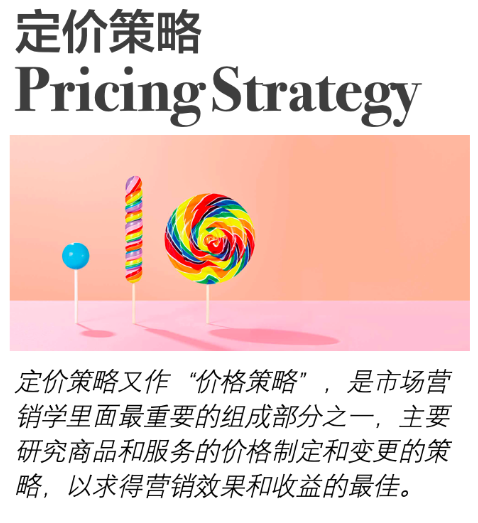「释义」
定价策略又作“价格策略”,是市场营销学里面最重要的组成部分之一,主要研究商品和服务的价格制定和变更的策略,以求得营销效果和收益的最佳。
常见的定价策略有:竞争定价法、成本加成定价法、撇脂定价法、限制定价法、损失领导者定价法、市场导向定价法、渗透定价法、价格歧视定价法等。
「应用场景」
苹果发布了10周年特别版iPhone X,价格定在999美元至1149美元,消息一经发布便成为各大媒体的头条。这一价格之所以吸引大众的关注,原因在于其定价明显高于同期发布的另两款手机——iPhone 8(699美元)、iPhone8plus(799美元)。还有个原因是,它接近、甚至打破了1000美元的关键门槛。手机价格提高到四位数,这对消费者来说是一个重要的心理障碍。
Apple made headlines by announcing that the price for its new iPhone X (a fancy term for 10) will range from $999 to $1,149. These prices are commanding attention because they are significantly higher than the base prices of the two other iPhone models that were also announced, the 8 ($699) and the 8 Plus ($799). The X’s price is also noteworthy because it approaches, and breaches, the key threshold of $1,000. Boosting prices into four-digit territory crosses an important psychological barrier for consumers.
为什么苹果要将这备受期待的产品价格推至极限?其中一个关键的原因就是,利用高价格来在消费者头脑中设置卓越的心理预期。
Why did Apple push the limits of pricing on the highly anticipated device? A key reason involves using a premium price to set an expectation of excellence in consumers’ minds.
这一定价策略类似于之前老鹰乐队成功使用的一个策略。
This is a pricing strategy similar to the one successfully implemented by the Eagles.
《史上最贵iPhone定价策略背后的心理学原因》 2017年10月刊
拉菲•穆罕默德
编辑:马冰仑





